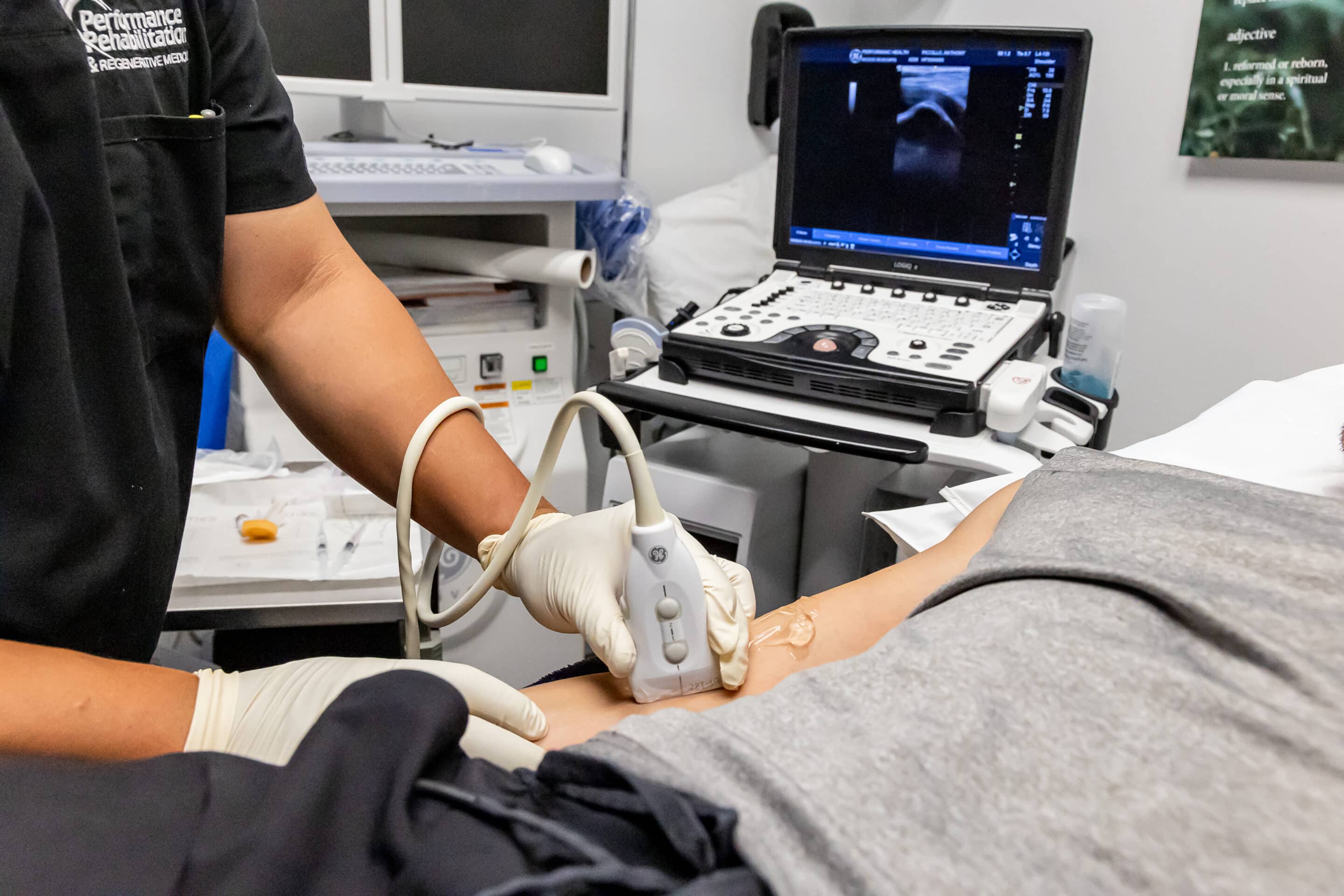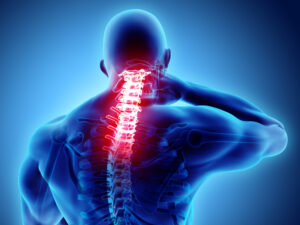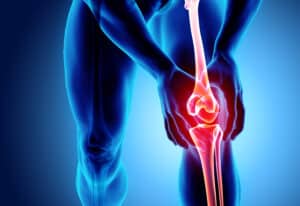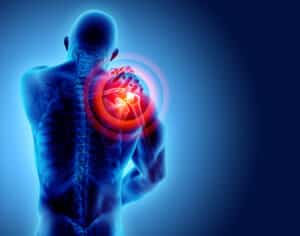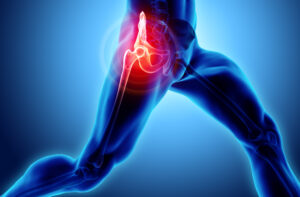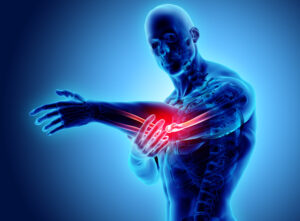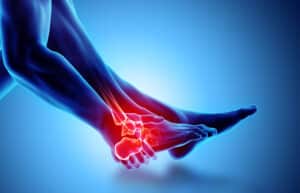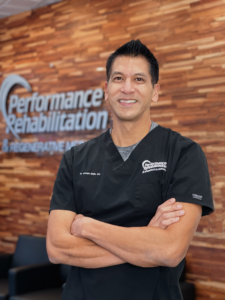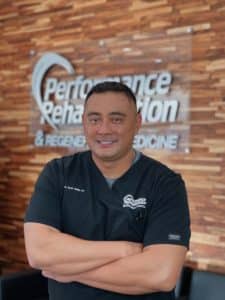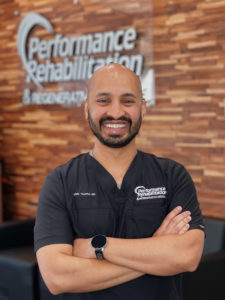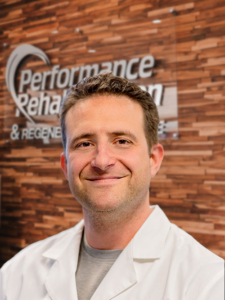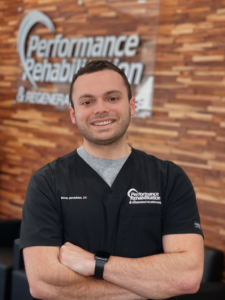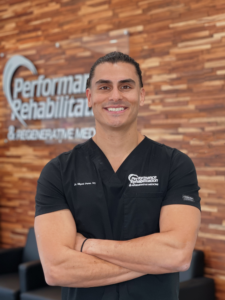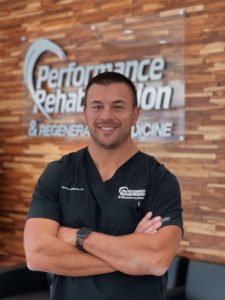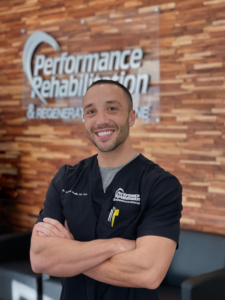Find Relief With The Top Neck and Back Doctors in New Jersey
At Performance Rehabilitation & Regenerative Medicine, our Board Certified Interventional Spine Specialists and NJ Back Pain Doctors are committed to providing relief from back pain, increasing mobility, and improving quality of life. Our team of doctors focuses on non-surgical back pain treatment options for patients with back pain, back injuries, and spine conditions. Comprehensive diagnostic services and back pain treatment options are offered in all three of our New Jersey locations to help get you to the bottom of your back and neck pain and get it under control.
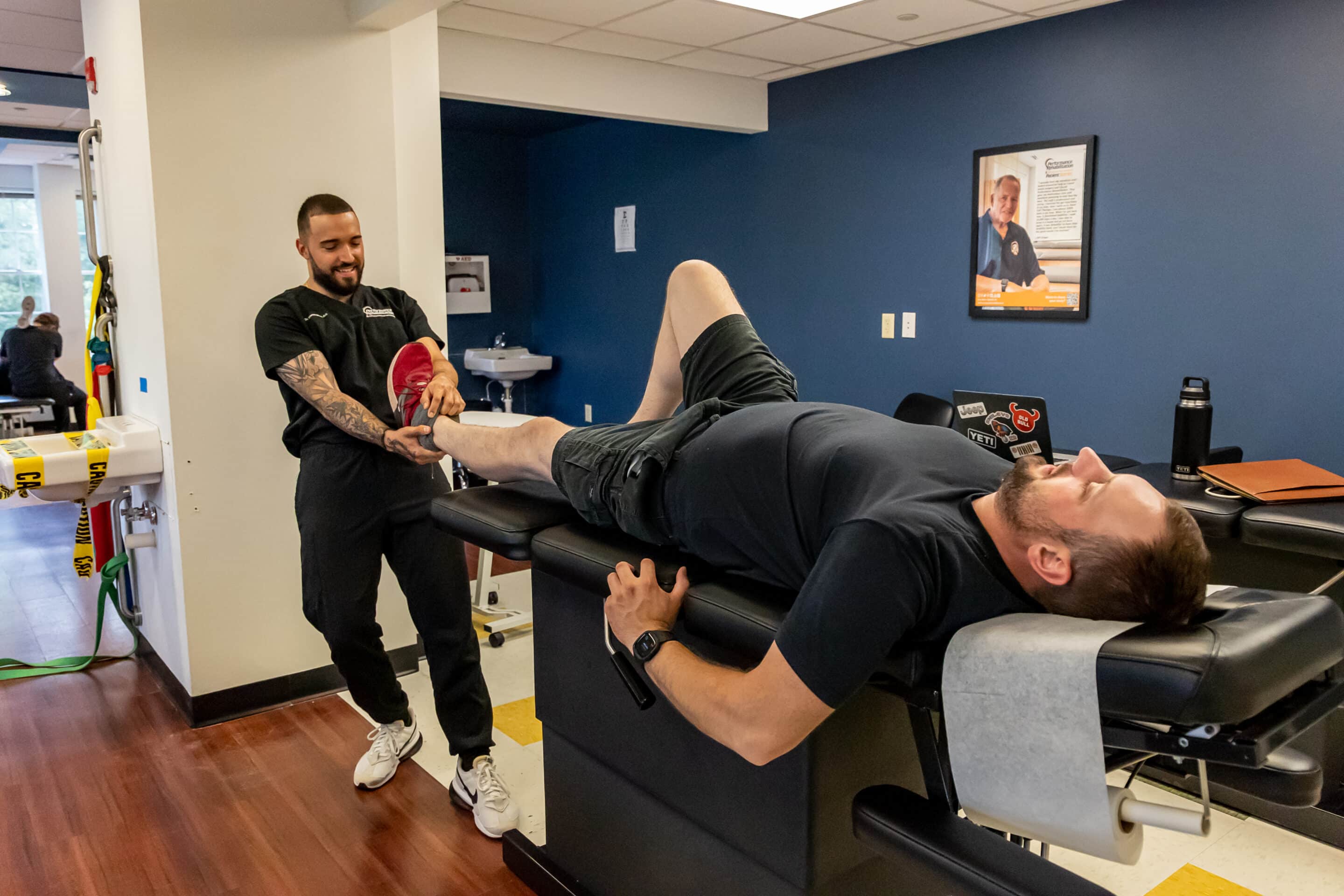
Common Types of Neck and Back Injuries
- Spine Strain and Sprain
- Degenerative Disc Disease
- Spine Osteoarthritis
- Herniated Disc
- Spine Radiculopathy
- Myofascial Pain
- Spine Facet Syndrome
- Spondylolysis
- Spondylolitshesis
- Spinal Stenosis
One of the most common causes of back and neck strain is poor posture. Workplace ergonomics and mobile device use are significant contributors. In instances like these, such as a condition commonly referred to as ‘cell phone neck’, muscles, tendons, and other soft tissue become overstretched resulting from the head being held too far forward for an extended duration.
A sprain or strain can also be the result of a pulled muscle or tendon associated with a single incident such as lifting an object improperly. A chronic strain, one that is long lasting, usually results from overuse due to ongoing, repetitive movements.
Degenerative disc disease (DDD) is a condition in the spine that is an arthritic process that occurs in the discs of the spine, as we age. The discs act as shock absorbers and bear weight, when they begin to degenerate, this can result in many different problems, including pain and stiffness in the neck and spine. As we age the discs in our low back have a tendency to lose their hydration and flatten which predisposes us to chronic conditions.
Osteoarthritis or degenerative joint disease (DJD) is the most common form of arthritis that affects the joints in our body. In the lumbar spine DJD will affect the vertebrae, facet joints and intervertebral discs. In between our joints we have a substance known as articular cartilage that aids in protecting our bones. Over time the cartilage will wear away resulting in pain and stiffness in the joints and muscles of the lower back.
In between each vertebra, there are soft cartilage-based pads known as intervertebral discs (IVD). These discs aid as shock absorbers and help bear weight. There are two layers that make up the IVDs. The outer layer (annulus fibrosis) and the inner layer (nucleus pulpous). The inner layer is a soft gel center that often migrates to the outside when there is an injury in the annulus fibrosis layer of the disc. In between each vertebra is an exiting nerve root. When a disc herniates it often will put pressure on these nerve roots leading to pain and altered sensation into the low back, buttocks, legs, and feet.
Neck and back radiculopathy occurs when there is compression on the nerve roots that exit between each of the vertebrae which travel to different areas into our low back, buttock, and lower extremity. Herniated discs and/or arthritic bone spurs are often responsible for the compression on a nerve. Patients will typically experience severe pain in the low back, buttocks, and legs which often results in numbness and tingling into these areas.
This is a condition that occurs in the muscles and fascia (outer layer of connective tissue) of the lumbar spine, which can lead to areas of tension in the muscles which are known as trigger points. Trigger points when stimulated or compressed can refer pain into the neck and shoulders. The most common area for trigger points to build up in the mid-back is the lumbar paraspinal muscles, middle trapezius, and rhomboids muscle groups. When trigger points exist in these locations they can produce pain that will refer in a specific type of pattern throughout the low back.
Facet pain is caused primarily by the degeneration of the cartilage inside of a facet joint (spinal joint between two adjacent vertebrae). As this cartilage breaks down, it becomes inflamed, triggering a painful response by nearby meningeal nerve endings.
Instead of indicating a specific diagnosis, spondylosis refers to any condition that results in degenerative changes of the spine. Although spondylosis is most commonly used as a synonym for spinal osteoarthritis, a variety of spinal problems fit the broad criteria for spondylosis.
Facet Joint Osteoarthritis (also known as Facet Joint Disease) accounts for the bulk of spondylosis cases. Facet joints are hinges on the back of the spine where bone meets bone—or in this case, where vertebra meets vertebra. As we age, the cumulative effects of everyday wear and tear may cause the rubbery cartilage that cushions our facet joints to erode. This degenerative process triggers a cascade of pain-generating events, as unprotected bone grinds excruciatingly against unprotected bone.
Spondylolisthesis is most often caused by spondylolysis. While the cause of spondylolysis is not clearly, many believe it is due to genetic weakness of a particular part of the vertebrae that makes up a facet joint. This genetic weakness, and subsequently spondylolysis, can be present at birth or occur later in life as the result of injury. It can also be caused by repeated stress fractures often experienced by athletes. The most common cause of Spondylolisis in adults is degenerative arthritis.
Spinal Stenosis is a common condition that typically results from something specific causing the open space in the spinal cord to become narrow or compressed. Causes of spinal stenosis may include:
- Herniated discs.The cushioning between your vertebrae tend to dry out with age. As they do, cracks begin to form allowing some of the soft cushioning to escape and put pressure on the spine or the nerves surrounding the area.
- Bone Overgrowth. Degenerative damage from osteoarthritis of the spine can form bone spurs, which can expand into the spinal canal. Also, conditions such as Paget’s disease can cause bone overgrowth in the spine.
- Ligament thickening.Strong ligaments provide support for the bones in your spine These ligaments tend to become stiff and thicken over time, sometimes bulging into the spinal canal.
- Tumors can form inside or around the spinal cord causing pressure on the spine or its surrounding nerves. While these are very uncommon, they are identifiable and ruled out with an MRI.
- Spinal Trauma, including surgery. Dislocations or fractures of one or more vertebrae resulting from an accident cause damage the spinal canal. Additionally, swelling immediately after an accident or back surgery can also put pressure on the spinal cord or nerves.
Dr. Joseph Bellapianta, MD
Orthopedic Surgeon
Dr. Anthony Piccillo, DC
Primary Spine Physician
Dr. Brendt Mendelblatt, DC
Chiropractic Physician
Dr. Joseph Mejia, DO
Pain Management Physician
Dr. Miguel Perez, DC
Chiropractic Physician
Dr. Kevin Tabije, DO
Pain Management Physician
Dr. Thomas Chiappetta, DC
Chiropractic Physician
Dr. Chris Thomas, MD
Pain Management Physician
